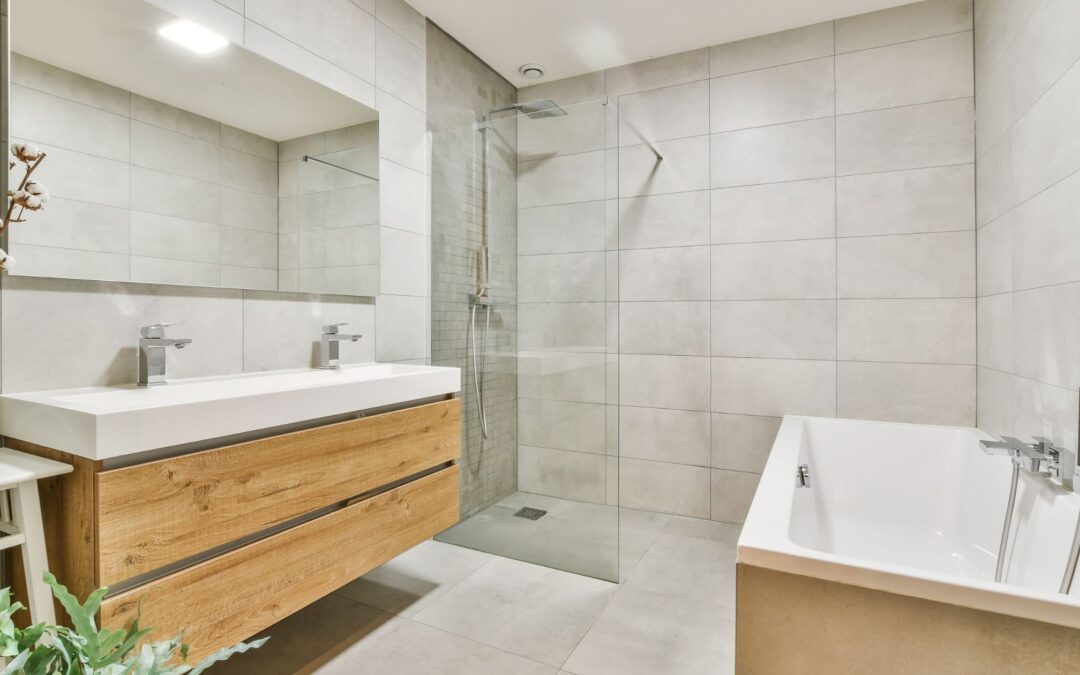Central Pennsylvania homeowners face unique challenges when renovating compact bathrooms, but small space bathroom ideas can transform even the tiniest rooms into functional, beautiful spaces. Whether you’re working with a small powder room, guest bathroom, or tiny space under the stairs, smart design choices maximize every square inch while maintaining style and comfort.
The key to successful small bathroom design lies in understanding how to save space without sacrificing functionality. Modern interior designers have developed innovative solutions that make small bathrooms feel larger while accommodating all necessary fixtures and storage needs. From wall mounted toilets to frameless glass doors, each element serves a purpose in creating more space.
Small bathroom ideas have evolved far beyond basic storage solutions. Today’s compact bathroom designs incorporate luxurious materials, clever lighting strategies, and multifunctional fixtures that rival larger spaces in both beauty and practicality. The result is a small bathroom that feels intentional rather than cramped.
Small Space Bathroom Ideas: Foundation Principles
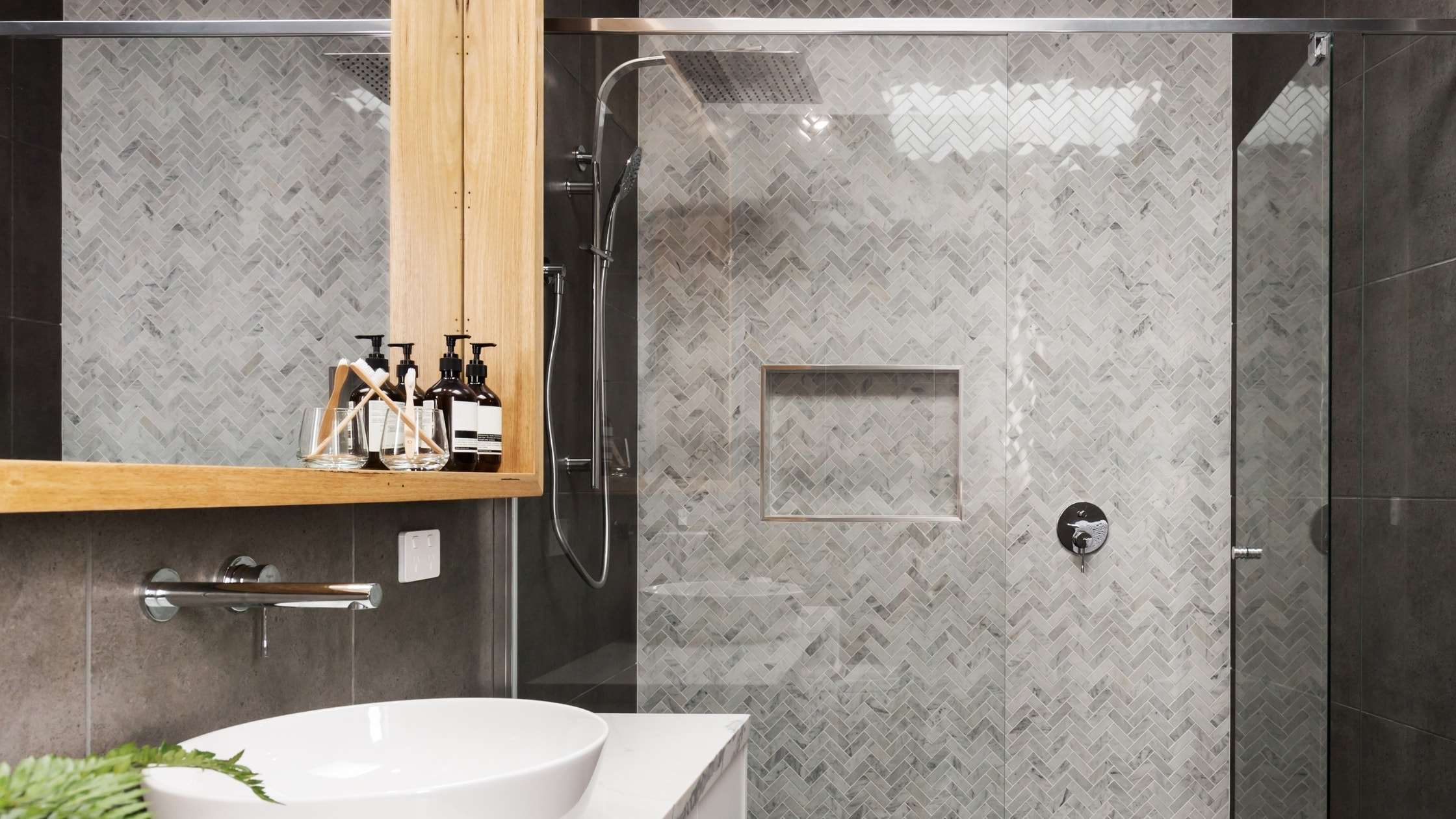
Creating successful small bathroom designs requires understanding fundamental space-planning principles. Every fixture, surface, and storage solution must earn its place through both function and visual appeal. Small bathroom spaces demand thoughtful consideration of traffic flow, sight lines, and proportional relationships between elements.
The most effective small bathroom ideas begin with a thorough assessment of available space and user needs. Consider who uses the bathroom, how often, and what activities take place there. A powder room requires different solutions than a guest bathroom or small master bath. Understanding these distinctions guides material selections and layout decisions.
Color choices significantly impact how spacious small bathrooms feel. Light colors reflect more light and create the illusion of expanded space, while dark colors can make tiny bathrooms feel cave-like. However, strategic use of bold colors as accent elements can add personality without overwhelming compact spaces.
Big Blue’s Tip: Measure your small bathroom three times before finalizing any design plans, including ceiling height, door swing clearances, and plumbing locations. These measurements prevent costly mistakes during renovation.
Glass Shower Doors: Opening Small Spaces

Glass shower doors represent one of the most effective ways to make small bathrooms feel larger and brighter. Unlike shower curtains that create visual barriers, glass doors maintain sight lines across the entire bathroom space. This continuous visual flow tricks the eye into perceiving more space than actually exists.
Frameless glass doors offer the cleanest appearance in small bathroom designs. The absence of heavy frames eliminates visual clutter while maximizing light transmission throughout the space. Even in tiny bathrooms, frameless glass doors create an open, airy feel that makes the room more pleasant to use.
The practical benefits of glass shower doors extend beyond aesthetics. They contain water more effectively than shower curtains, protecting bathroom floors and walls from moisture damage. In small bathrooms where every surface counts, this protection becomes especially important for long-term maintenance.
Selecting Glass Door Styles for Small Bathrooms
Different glass door configurations work better in various small bathroom layouts. Sliding doors save space compared to hinged doors in particularly tight quarters. Single-panel doors work well when space allows, creating the most open appearance possible.
Textured or frosted glass provides privacy while maintaining the space-expanding benefits of glass shower doors. These options work particularly well in guest bathrooms or powder rooms where privacy concerns might otherwise dictate solid doors or curtains.
Did you know? Glass doors can make a small bathroom appear up to 30% larger by eliminating visual barriers and reflecting light throughout the space.
Floor Tile: Creating Visual Continuity
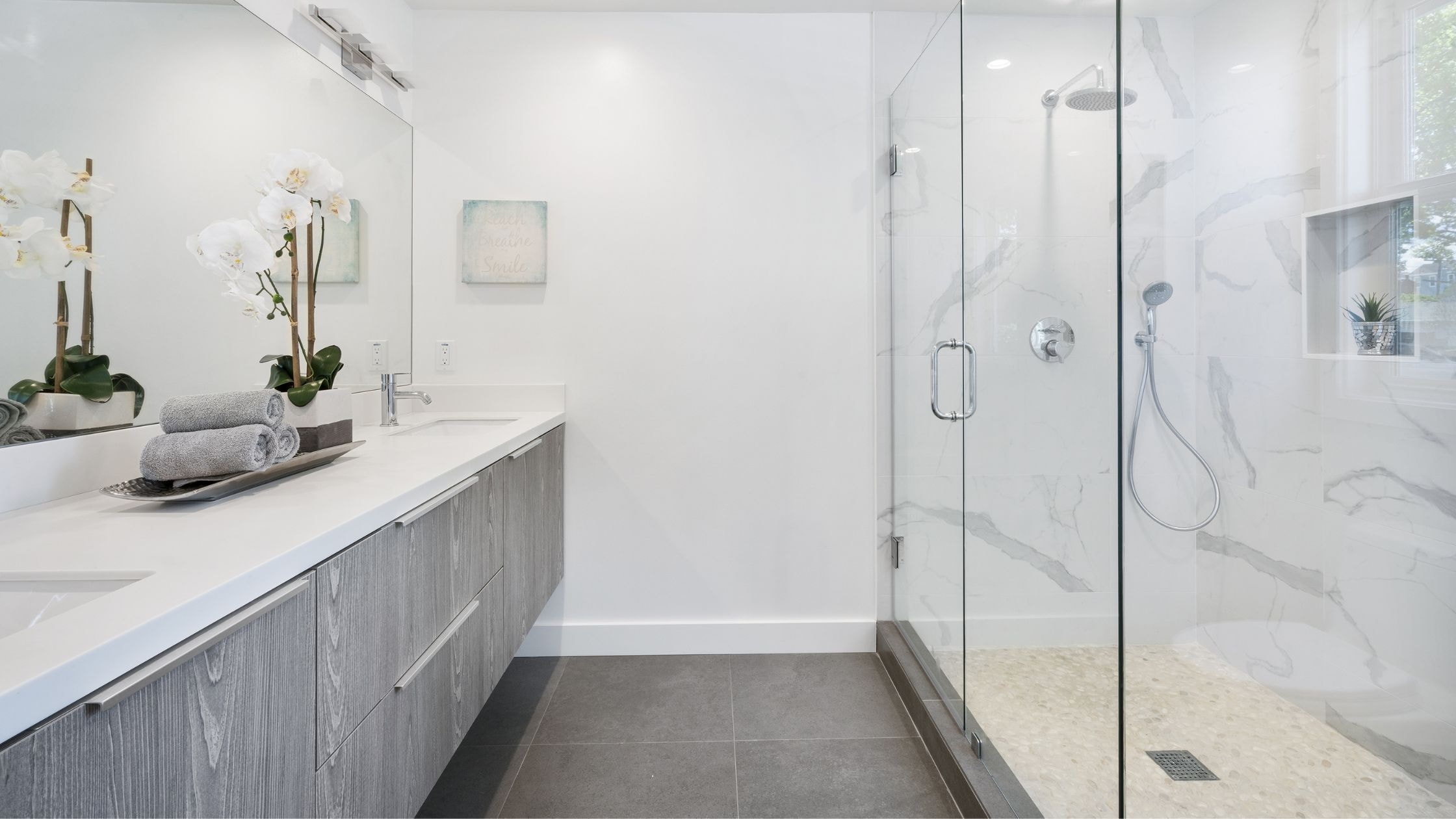
Floor tile selection plays a crucial role in making small bathrooms feel more spacious. Large format tiles create fewer grout lines, resulting in a cleaner, more continuous appearance that expands visual space. Small tiles, while charming, can make tiny bathrooms feel busy and cramped through excessive pattern repetition.
Light-colored floor tiles reflect more light upward, brightening the entire small bathroom. White tiles, light gray options, or pale neutral tones work particularly well in compact spaces. However, floor tile choices should coordinate with wall treatments and fixture selections to create cohesive design schemes.
The pattern in which you install floor tiles can influence perceived space dimensions. Diagonal installations make narrow spaces feel wider, while large format tiles laid in straight patterns emphasize the room’s actual dimensions. Consider these visual effects when planning your small bathroom renovation.
Bathroom Ideas: Maximizing Space

Successful bathroom ideas for smaller spaces focus heavily on vertical storage and design elements. Wall space above toilets, beside vanities, and around doorways offers valuable storage opportunities that don’t consume floor or counter space. Recessed shelves, wall mounted cabinets, and tall storage solutions maximize available cubic footage.
Vertical elements also influence how tall small bathrooms feel. Floor-to-ceiling tiles, tall mirrors, and vertical storage units draw the eye upward, creating the impression of higher ceilings. This technique works particularly well in small bathrooms with standard eight-foot ceilings.
Consider how bathroom fixtures can serve multiple purposes. A tall storage cabinet might house linens while concealing plumbing or electrical components. Built in storage around bathtubs or showers eliminates the need for separate storage furniture that consumes precious floor space.
Creative Vertical Storage Solutions
Wall mounted toilet paper holders with integrated shelving combine function with storage. Corner shelving units utilize often-wasted vertical space while providing display areas for decorative items that add personality to small bathrooms.
Medicine cabinets extend beyond simple mirror storage. Modern options include integrated lighting, electrical outlets, and multiple compartments that organize toiletries efficiently. These solutions eliminate counter clutter while maintaining easy access to daily essentials.
Floating Vanity: Creating Airiness and Counter Space
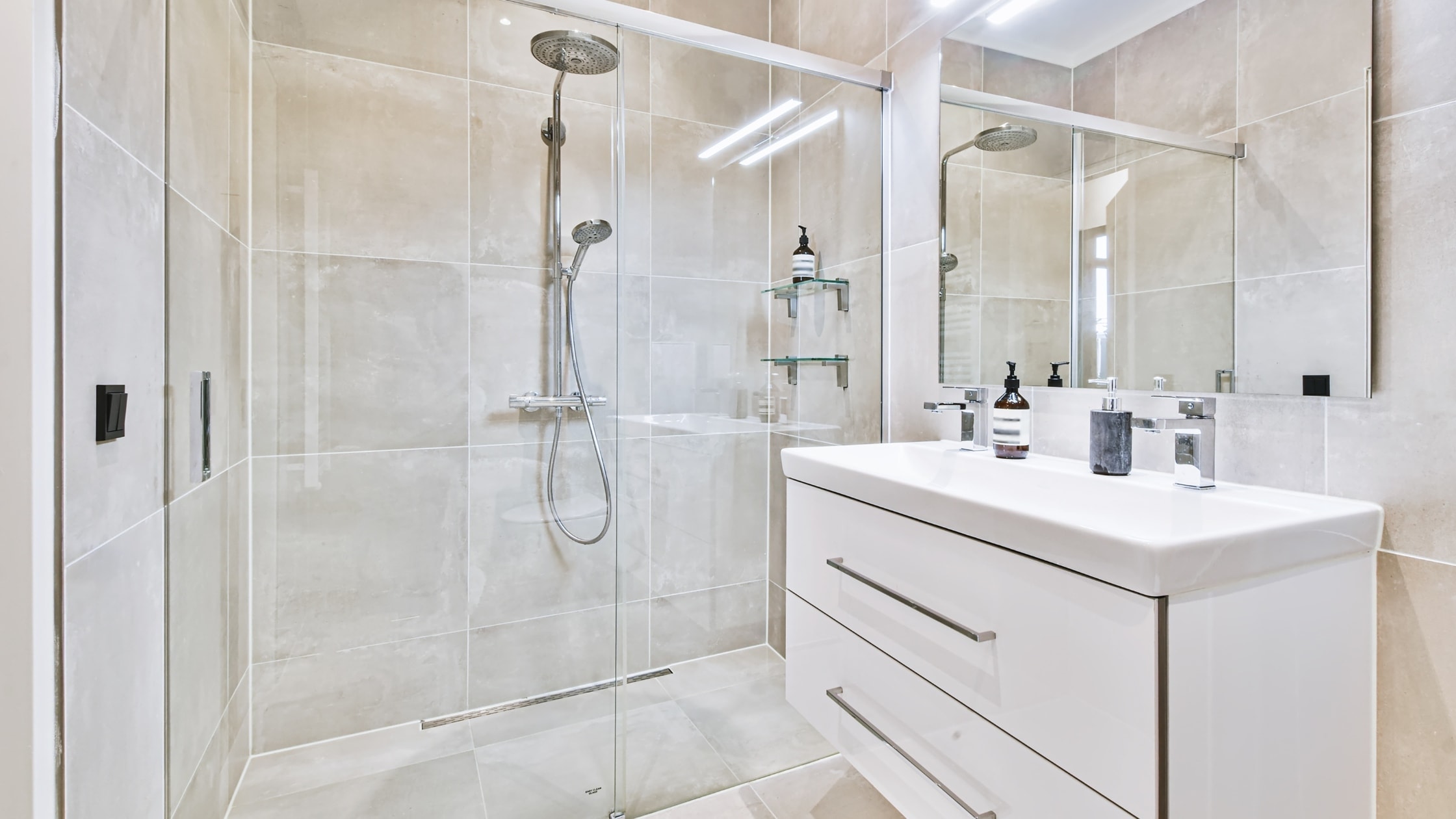
Floating vanities create the illusion of more space by exposing floor area beneath the vanity cabinet. This open space allows light to flow underneath, brightening the entire small bathroom while making the room feel less cramped.
The exposed floor beneath floating vanities also simplifies cleaning and maintenance. Small bathrooms benefit from easy maintenance solutions that keep spaces hygienic without requiring excessive effort or time investment.
Floating vanities work well with various design styles, from modern to traditional. The key is selecting proportions and finishes that complement the small bathroom’s overall aesthetic while maintaining the space-expanding benefits of the floating installation.
Floating Vanity Installation Considerations
Proper wall reinforcement is essential for floating vanity installations. Small bathrooms often have plumbing or electrical components within walls that require careful consideration during installation planning.
Storage solutions within floating vanities must maximize the available space efficiently. Drawer organizers, pull-out trays, and door-mounted storage help organize toiletries within the compact vanity footprint.
Did you know? Replacing a standard vanity with a wall-mounted option can create the visual impression of 40% more floor space in small bathrooms, even when the actual footprint reduction is minimal.
Rustic Vanity: Adding Character to Little Spaces
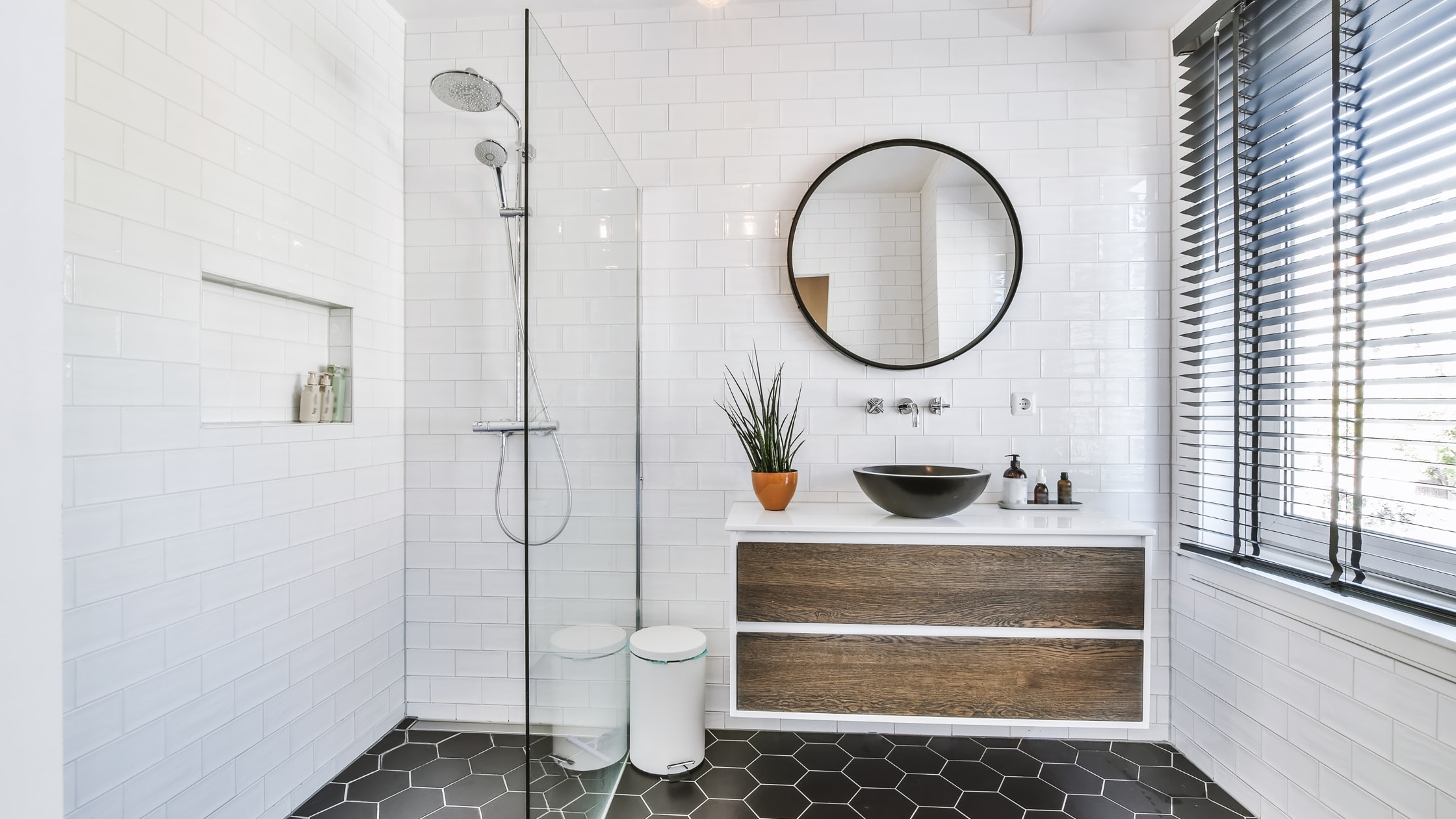
Rustic vanities bring warmth and character to small bathroom designs without overwhelming compact spaces. Wood textures and natural finishes create visual interest that prevents small bathrooms from feeling sterile or institutional.
The key to incorporating rustic vanities in small bathrooms lies in balancing the natural textures with clean, simple lines. Avoid overly ornate details that can make little spaces feel cluttered. Instead, focus on beautiful wood grains and quality craftsmanship.
Rustic vanities pair well with other natural elements in small bathroom designs. Stone countertops, natural fiber rugs, and antique mirrors create cohesive design schemes that feel connected to nature despite the compact space limitations.
Bold Wallpaper: Statement Walls in Compact Spaces
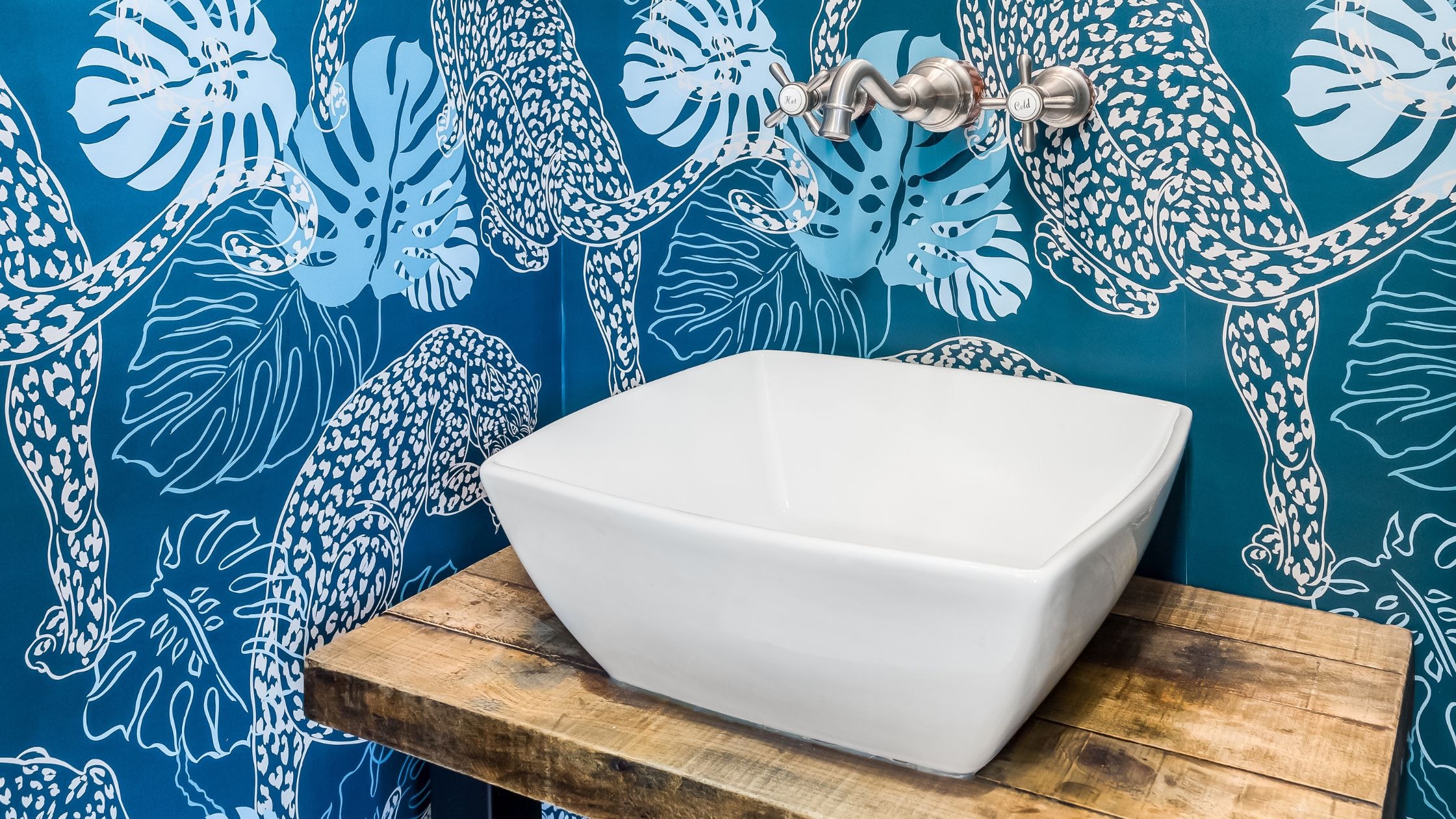
Bold wallpaper creates instant personality in small bathroom designs while serving as a focal point that distracts from size limitations. The key is selecting patterns and colors that enhance rather than overwhelm compact spaces.
Floral wallpaper brings softness and natural beauty to small bathrooms, particularly when combined with simple fixtures and neutral colors. The organic patterns create visual interest without the harsh geometry that might feel overwhelming in tiny spaces.
Geometric wallpapers work well in powder rooms and guest bathrooms where bold statements are welcome. These patterns add sophistication and contemporary appeal while maintaining the clean lines that benefit small room design.
Powder Room Design Excellence

Interior designers know that powder rooms represent unique opportunities in small bathroom design because they serve limited functions, allowing for bolder design choices. These compact spaces can accommodate dramatic elements that might overwhelm larger, multi-purpose bathrooms.
Small powder rooms benefit from luxury materials and finishes that create memorable experiences for guests. High-end tiles, elegant fixtures, and sophisticated color schemes transform tiny spaces into jewel-like rooms that make strong impressions.
Storage needs in powder rooms are minimal, allowing more focus on aesthetic elements. This freedom enables creative design solutions that prioritize beauty and impact over extensive functionality.
Accessibility Integration
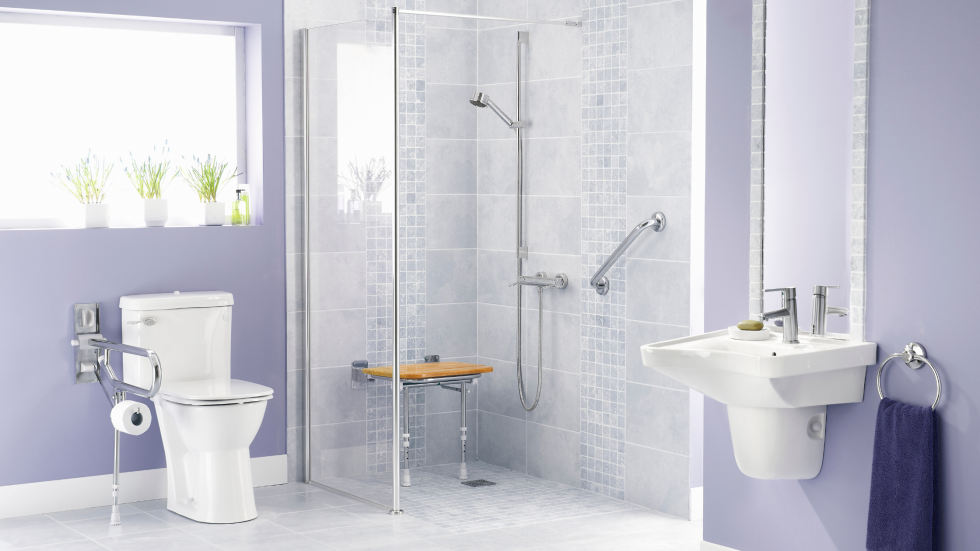
Small bathroom designs can incorporate accessibility features without sacrificing style or functionality. Universal design principles benefit users of all ages and abilities while maintaining aesthetic appeal in compact spaces.
Grab bars integrate seamlessly into small bathroom designs when selected thoughtfully. Modern grab bars resemble towel bars or decorative elements while providing essential safety features for users with mobility concerns.
For detailed information on incorporating accessibility features into small bathroom designs, visit our comprehensive guide on Accessible Bathroom Renovations for All Ages which explores practical solutions for creating inclusive spaces.
Curbless showers work well in small bathrooms where traditional shower enclosures might feel cramped. These accessible shower designs create seamless floor transitions while accommodating mobility aids when needed.
Future-Proofing Small Bathroom Designs
Consider how small bathroom ideas might need to adapt over time as user needs change. Flexible design elements and quality construction ensure spaces remain functional and beautiful for decades.
Reinforcement for future grab bar installation costs little during initial construction but provides valuable options if accessibility needs develop later. This planning demonstrates thoughtful design that considers long-term usability.
Consider exploring options for tub-to-shower conversions if your small bathroom currently has an underused bathtub. Our guide on Bathroom Tub to Shower Conversion: A Modern Upgrade explains how these conversions can significantly improve small bathroom functionality.
Frequently Asked Questions
What is the smallest size for a functional bathroom?
The absolute minimum size for a functional bathroom is typically 30 square feet, which allows for a toilet, small vanity, and shower. However, 40-50 square feet provides more comfortable spacing and better functionality for daily use.
How can I make my tiny bathroom look bigger?
Use light colors on wall tiles and floors, install large mirrors, choose frameless glass shower doors, and eliminate visual clutter through smart storage solutions. Consistent flooring throughout connected spaces also creates the illusion of expanded area.
Should I choose a pedestal sink or vanity in a small bathroom?
A small wood vanity with a tiny sink typically provides better functionality than a pedestal sink by offering storage space and counter area. However, pedestal sinks work well in small powder rooms where storage needs are minimal and maximum floor space is desired.
What type of toilet works best in small bathrooms?
Wall hung toilets save space and create easier cleaning access. Corner toilets work well in particularly tight spaces, while compact elongated toilets provide comfort in slightly less constrained areas.
How do I add storage to a small bathroom without making it feel cramped?
Focus on vertical storage solutions like tall, narrow cabinets, recessed shelves, and wall mounted organizers. Use light colors and maintain visual continuity to prevent storage solutions from overwhelming the space.
What lighting works best in small bathrooms without windows?
Interior designers combine recessed ceiling fixtures with mirror lighting for even illumination. LED strips under floating vanities add ambient lighting that makes the space feel larger. Consider light-colored surfaces that reflect artificial light throughout the room.
Can I have a walk in shower in a very small bathroom?
Yes, compact walk in showers with sliding or bi-fold glass doors can work in small bathrooms. Corner walk in shower configurations save space while providing comfortable shower areas.
What colors make small bathrooms feel larger?
Light, neutral colors like white, pale gray, and soft beiges reflect light and create spacious feelings. However, strategic use of one bold accent wall can add personality without overwhelming compact spaces. Interior designers often recommend black and white bathrooms or pale blue tiles as a classic and chic choice.
Creating Your Perfect Small Bathroom Oasis
Small bathroom transformations require careful planning, creative problem-solving, and quality execution to achieve maximum functionality within minimal square footage. The key lies in understanding that size limitations need not compromise style, comfort, or luxury when approached with the right strategies and professional expertise.
Every square inch matters in small bathroom design, making thoughtful fixture selection, smart storage integration, and strategic material choices essential for success. From powder rooms that make memorable first impressions to tiny master bathrooms that provide daily luxury, the principles remain consistent: maximize space through clever design while maintaining beauty and functionality.
The investment in professional small bathroom design pays dividends through increased home value, daily satisfaction, and the pride that comes from creating a beautiful, functional space regardless of size constraints. Quality materials, expert installation, and attention to detail ensure your small bathroom serves your family beautifully for years to come.
Modern small bathroom design continues evolving with new materials, fixtures, and space-saving innovations that make small rooms more functional and beautiful than ever before. Whether you’re planning a complete renovation or seeking to improve specific elements, the foundation principles of successful small bathroom design provide the framework for creating spaces that exceed expectations.
According to the National Kitchen and Bath Association, small bathroom renovations consistently deliver among the highest returns on investment while dramatically improving daily quality of life.
For comprehensive guidance on selecting materials and planning small bathroom renovations, explore our detailed resource on The Ultimate Guide to Bathroom Remodels which covers budgeting, material selection, and project management strategies.

